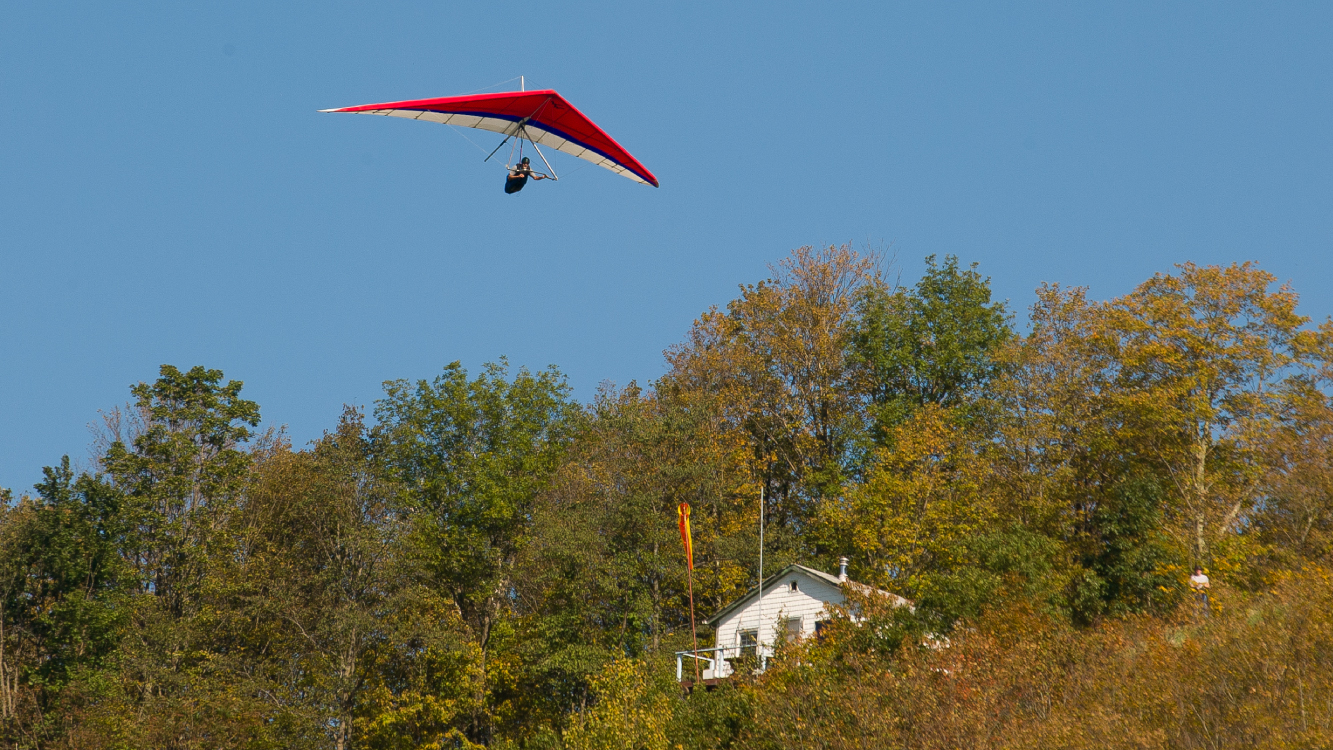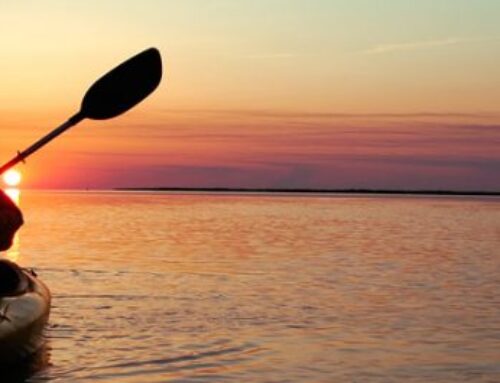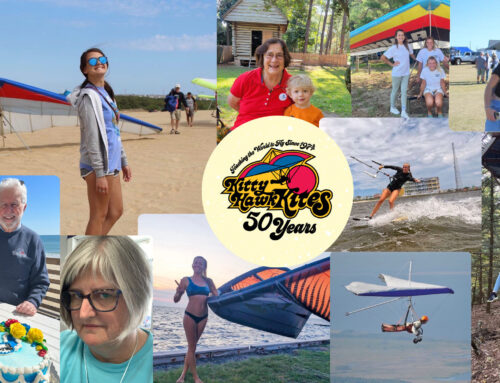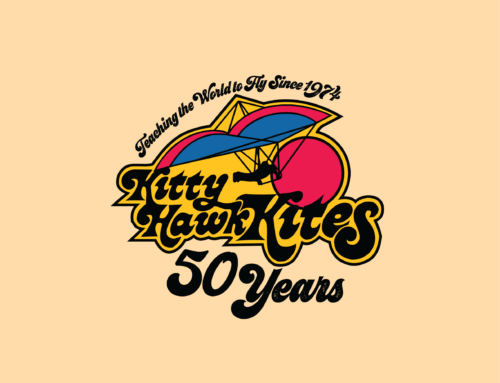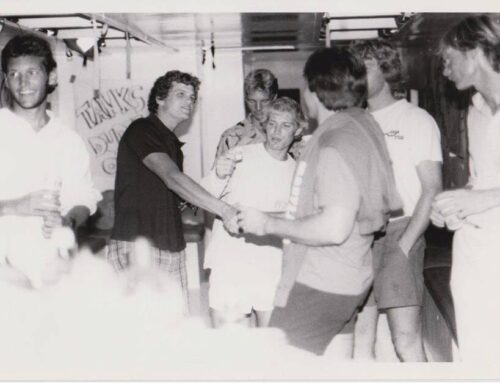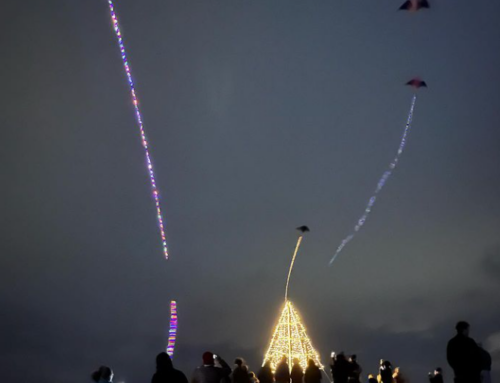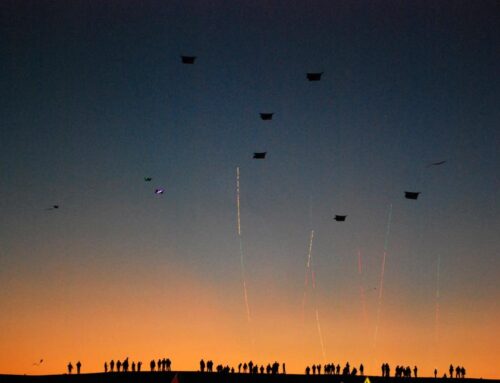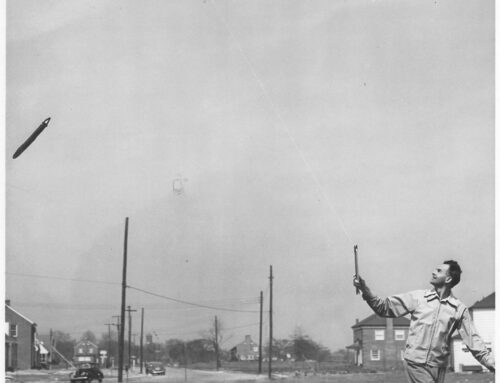The Break Down
The most important costs when it comes to Hang Gliding, are also often the most expensive.
- Training
- Gear
- Time
Training Costs
Training costs vary between schools and often depend on the level of skill you're looking to learn. For kitty hawk kites, we have a plethora of training options. For the sake of comparison, we discussed the Hang 2 packages that we offer in the Outer Banks and at Morningside flight Park in New Hampshire.

We have designed an accelerated Hang Gliding Lesson curriculum to help get you to the Hang 2 rating if you don't have any experience. You'll be able to complete your foot launch requirements at Jockeys Ridge State Park. Then gain altitude and your aerotow rating with our tandem aerotow instructors at the Cotton Gin. This package costs $1999 and results in your Hang 2 rating with aerotow.

This is a comprehensive Hang Gliding course that contains the classroom requirements and instruction necessary to acquire the skills toward earning USHPA Hang 2 rating. Upon completion, students will generally have received the required information to understand how and when to fly hang gliders as a novice to intermediate pilot. This course costs $1750.
Of course training takes time. Not just the lessons you take with your instructor, but also the research you do on your own time. There are several books available to help expand your knowledge of the sport. We also recommend taking time to understand the weather forecast and how temperature, wind direction, and wind speed affect your flights.
The Cost of Gear
Gear will be your biggest expense on your journey to becoming a hang gliding pilot. We recommend training in the gear you plan on flying in, if possible. These will be the necessary flying gear to get you started and keep you safe.
- Glider
- Harness
- Parachute
- Helmet

Glider
A new entry-level glider for beginners, such as a Wills Wing Falcon, will generally cost around $4,000. These gliders are single surface, fun, easy to set up, and easy to fly.
You may be able to find a good quality, used glider from an accredited instructor or school in the $1,800 to $3,000 range.
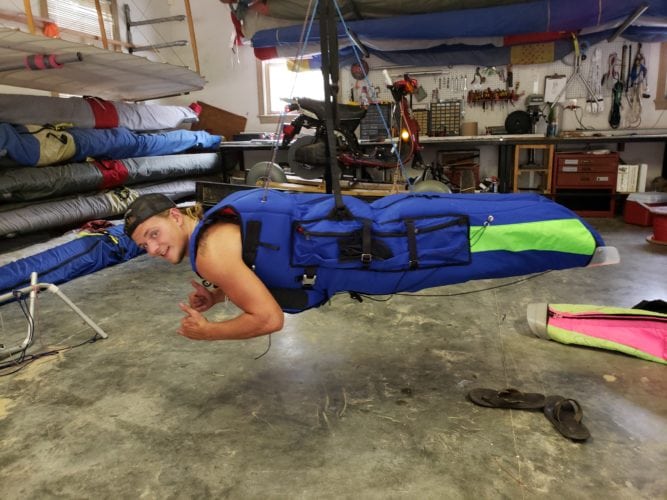
Harness
A new, fully enclosed pod harness (like the one shown) typically costs about $1,000. These will keep you warm in cold air.
In comparison, a new cocoon harness runs around $750 and features an open back that allows you to be open to the wind.
It is possible to purchase a used harness for around $250 to $300. However, the harness will not be custom fit to your body and thus will be less comfortable.
When buying used gear, we recommend going through an accredited school or a respected and certified instructor.

Parachute
The cost of a parachute varies depending on the size you need. They run about $650 to $700. We recommend parachutes with a pull down apex (like the one shown) and a paraswivel to keep the lines from getting tangled. We do not recommend buying a used parachute.
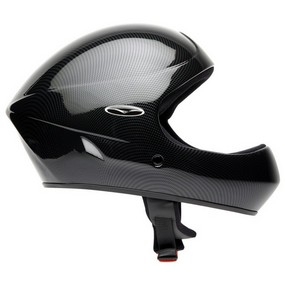
Helmet
Helmets vary greatly depending on the features that you want and can cost anywhere from $75 to $500. One major consideration will be whether you want a full-face (like the one pictured) or an open-face helmet. A full-face helmet offers more protection, especially for your chin and jay, but is generally more expensive than an open-face helmet. The next most common consideration is a radio. Some helmets can be equipped with a radio and headset inside the helmet and may be required by your instructor.
An entirely new set up will typically cost upwards of $5,500, while a used set up is closer to $3,500. Combined with training, you are looking at a cost range between $5,000 and $8,000.
Hidden Costs
Of course the costs of hang gliding are not completely straight forwards, so there are some hidden costs to consider.
When going to new locations to fly, there is often a site fee. This helps to maintain the location and keep the launch and landing zone nice for every pilot. Site fees vary from location to location but generally run around $25 for a week. Some locations also offer rides up the mountain. So unless you want to carry your glider up to top before every flight, factor in the cost of a ride card as well.
Travel is also a common hidden cost. Packing a hang glider on top of your car often causes your car to run less efficiently and will increase your gas costs.
Another not-so-hidden cost is advanced instruction. Hang Gliding schools and clubs will often host clinics to help provide their students with more information. Sometimes these even feature advanced pilots and a new perspective to learn from. While not required to become a better pilot, clinics can help advance your skill quickly with this more detailed instruction on specific topics. Common clinics that we recommend attending cover landings and flight planning. Some clinics also cover more advanced flying like competition and cross country.
Often along your journey to becoming a hang gliding pilot. you may develop a mentor/mentee relationship with a local pilot or instructor. This relationship will help you to become a better pilot and will give you a strong connection to the local club and the general hang gliding pilot community. When you have a mentor showing you the ropes, make sure you show them your appreciation. Offer to buy him dinner, a beer, or a tank of gas. This will go a long way in ensuring you become part of the local pilot community.
Mitigating Costs
With all these dollar signs floating around, it can be a little prohibitive to get into hang gliding. There are ways you can lower these costs a bit.
A common cost lowering practice is your roof rack set up. Several pilots diy their roof rack with a ladder and some pool noodles. Reach out to your local school, club, or instructor to give you tips on the best set up for your car.
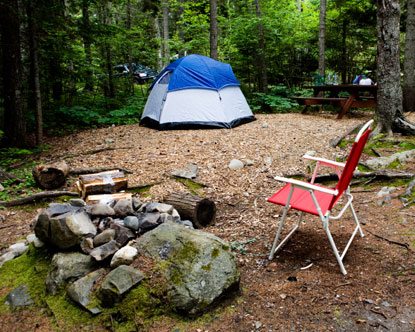
When traveling to your launch site, many locations have camping sites nearby which can save you money when compared to booking a hotel. And as always, a good way to split costs when traveling is carpooling. This may not be possible currently with COVID-19 still being a concern. But hopefully, that concern won't be around in the near future.
Some schools and clubs will also offer gear to rent for around $75 to $100 until you save up for your own equipment.
As we stated earlier, you can buy some used gear. Make sure you get your gear through a reputable source like an accredited instructor or school.
Another factor to consider when purchasing hang gliding gear is the resale value, specifically that of your glider. For example, Wills Wing Falcons retain their value well over the years.
1. At what rating would you buy a parachute?
As soon as you buy your own harness. When you fly in your harness, a parachute will change how the harness feels.
2. Where can you buy a helmet?
In most cases, you will have to order online. Some schools will have a limited stock of helmets to sell. Either way, talk with your instructor on reputable brands and online stores. They will also be able to help you measure your head and order the best size helmet for you.
3. Can I use my motorcycle helmet?
You can. BUT, your neck will get tired very quickly from the weight of the helmet.
4. What would you buy if you had an unlimited budget?
Wolf: Wills Wing Sport 3, Wills Wing Flylight Coccoon, Lara 250 parachute, Aeros Full-face Helmet.
Billy: most of the same as Wolf except I would choose either a Wills Wing Falcon or an Alpha.
5. How do you judge the age and quality of a used glider?
Most have an air time listed in hours. Also, take into account that sunshine ages gliders and wears down the sail. So a glider thats been kept in a bag in the garage will be in better condition than one that's been set up and sitting outside between flights. Make sure you put your hands on the sail. A sail in good condition will feel crispy.
6. What spare parts should you carry with you?
The most commonly damaged part of the glider is the down tubes. So, we recommend keeping a spare down tube with you and a bag of extra nuts, bolts, safetys, and batten clips for quick fixes or a case of butterfingers. Any damage more extensive than that will require a full inspection.
Next Session
We plan to continue hosting these Zoom calls ever other week. Find more information on our schedule and topics at: https://www.kittyhawk.com/event/freeflight-qa/
